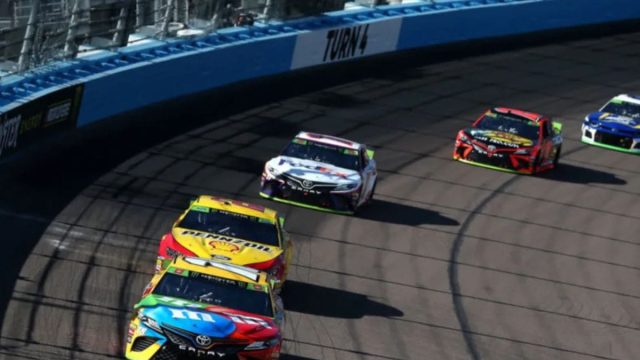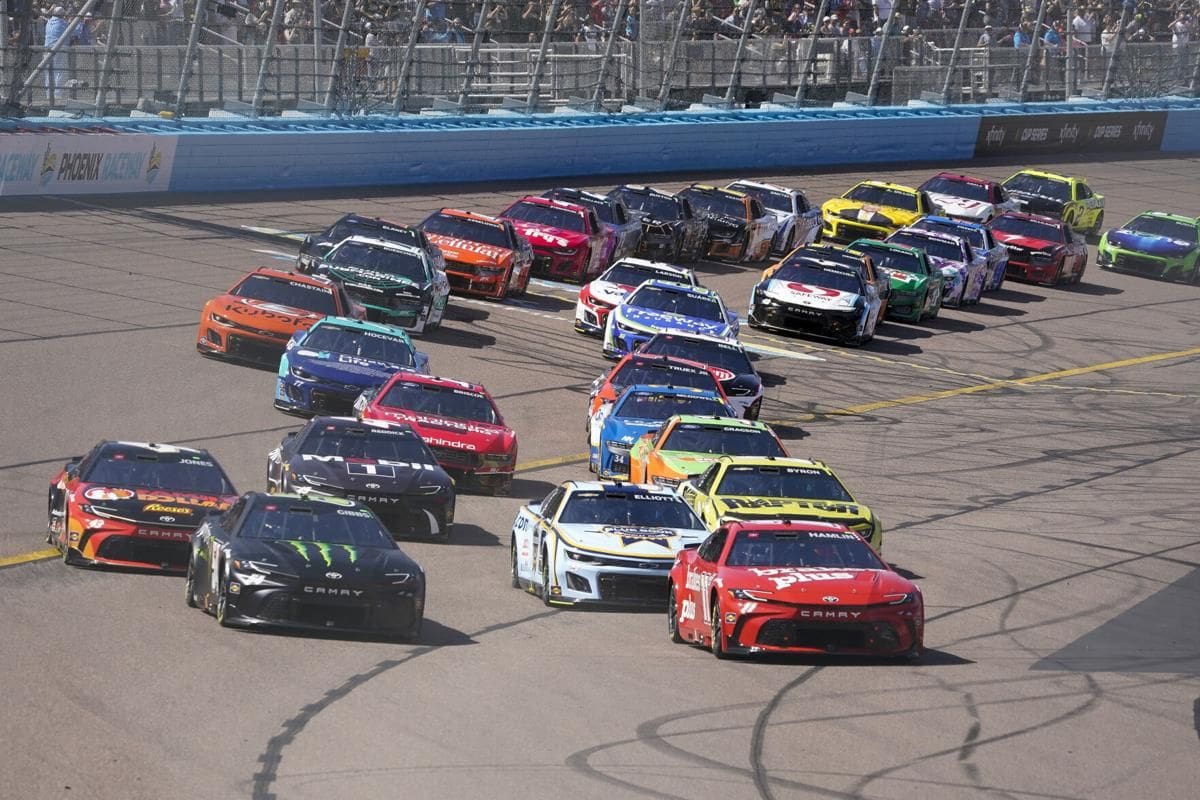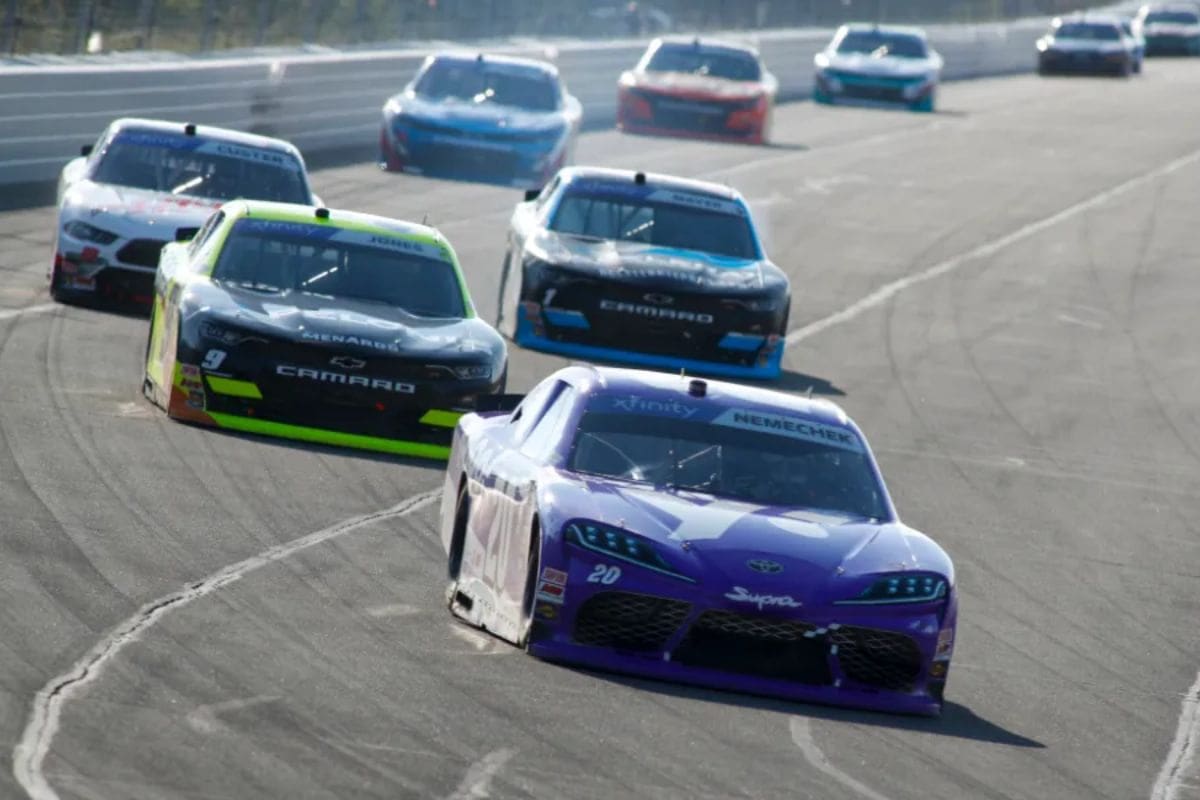NASCAR’s Stage Racing Controversy: NASCAR’s introduction of stage racing in 2017 marked a crucial shift in the sport’s competitive dynamics and audience engagement approaches. While the format has successfully intensified competition and added tactical layers for drivers, it has also ignited notable debate regarding its authenticity and long-term implications for the sport. Critics contend that the predictability of stage breaks undermines the organic nature of racing, prompting NASCAR to reassess its approach amidst evolving fan expectations. As the Next-Gen era unfolds, the question remains: can NASCAR strike a balance between innovation and tradition without alienating its core audience?
Key Highlights
- Stage racing, introduced in 2017, shifted competitive focus from overall race results to stage victories, impacting strategies in the Next-Gen era.
- Next-Gen cars, designed for improved performance and safety, adapt to the strategic demands of the stage racing format.
- The emphasis on stage points has led to criticisms about the authenticity and spontaneity of races, affecting fan engagement.
- NASCAR’s willingness to modify stage racing, like removing cautions during road-course events, reflects ongoing fan feedback and concerns.
NASCAR’s Stage Racing Format
NASCAR’s introduction of stage racing in 2017 marked a notable shift in the Cup Series format, aimed at enhancing tactical pit stops and creating more engaging race restarts for fans. This innovation introduced a structured approach to races, dividing each event into three distinct segments — or stages — which culminate in a caution period. This segmentation incentivizes drivers to race competitively for stage points and guarantees that fans witness increased intensity throughout the event.
The tactical implications of stage racing are noteworthy. Drivers must now navigate their race strategy around the stage breaks, deciding when to pit for fuel and tires. This added layer of complexity requires a keen understanding of both vehicle performance and race dynamics, as teams must balance the immediate need for stage points against potential long-term gains in the general race. Moreover, the excitement generated by frequent restarts serves to heighten the spectators’ experience, as it often leads to unpredictable outcomes and dramatic overtakes.
Despite these benefits, the introduction of stage racing has not been without its controversies. Critics argue that the format has diluted the essence of traditional racing, where endurance and strategy played more crucial roles. The emergence of the Next-Gen race car further complicates the narrative, as teams adapt to new technology while grappling with the implications of the stage format.
Business and Competitive Impact of Stage Racing
The implementation of stage racing has greatly transformed NASCAR’s business model, improving its competitiveness in a crowded sports landscape while also optimizing commercial opportunities for television partners. By structuring races into stages, NASCAR has created natural breakpoints that accommodate commercial broadcasts, thereby increasing the value of television contracts and expanding revenue streams.
Prior to the introduction of stage racing in 2017, NASCAR lacked the conventional breaks found in other major sports, limiting opportunities for advertisers. The tactical decision to incorporate stages allowed the series to introduce a competitive format while also addressing the logistical challenges of broadcasting, which boosts viewer engagement and retention. This innovation has not only improved the complete race experience but has also made NASCAR more appealing to sponsors and advertisers who seek to utilize televised segments effectively.
Furthermore, stage racing has contributed to heightened competition on the track. With points awarded for stage finishes, teams are incentivized to adopt aggressive strategies throughout the race, leading to increased on-track action. This dynamic has attracted a broader audience, as it elevates the thrill of the competition and keeps fans engaged from start to finish.
Driver Incentives and Benefits
Driver incentives have been considerably improved through the introduction of stage racing, as top finishers in each stage earn valuable championship points that enhance their competitiveness in the total standings.
This tactical alteration has transformed the approach drivers take during races, as the focus has shifted from merely finishing the race to actively competing for stage victories. The top ten finishers in the initial two stages are now rewarded with supplementary championship points, thereby enhancing their overall performance metrics.
This revamped point structure not only incentivizes drivers to vie for top positions throughout the race but also introduces an engaging layer of strategy. With the stage winner receiving an additional bonus point that can be carried into the playoffs, the implication of these points extends beyond individual races, directly affecting playoff positioning and the championship landscape.
Historically, drivers had limited motivation to battle for mid-pack positions, as the payoff for such efforts was minimal. Stage racing has effectively rectified this by creating a tangible reward for aggressive racing and tactical overtaking. As a result, fans witness heightened competition, as drivers push the limits to secure valuable points in the early stages of each event.
Moreover, these incentives foster a more dynamic racing environment, compelling teams to refine their strategies and adapt to evolving circumstances within each race.
Drawbacks and Criticisms of Stage Racing
Stage racing has sparked considerable debate among fans and analysts, particularly regarding its impact on race strategy and the authenticity of competition. Critics argue that the predictability of stage breaks has led to a manipulative approach to race tactics. Crew chiefs are now capable of crafting strategies with precision, knowing exactly when to pit for fuel and tires, which diminishes the spontaneity that once characterized NASCAR events. As a result, drivers are increasingly incentivized to maintain track position rather than engage in dynamic racing.
This transformation is particularly evident at superspeedway races, where the emphasis on conserving fuel and tactically splitting stages has overshadowed the competitive spirit traditionally associated with these events. The Gen-7 car, designed to promote parity among teams, has further exacerbated this trend, as it has effectively reduced the likelihood of varied racing styles. Instead of witnessing a spectrum of drivers rising and falling in position, races have devolved into tactical chess matches, where the primary objective becomes safeguarding position until the next stage break.
Moreover, the points incentives tied to stage finishes compel drivers to prioritize stage performance over total race competition, undermining the integrity of the sport. The last laps of each stage often devolve into forced maneuvers, driven by the desire to secure valuable points rather than showcasing genuine racing talent. Consequently, the essence of NASCAR as a competitive motorsport is jeopardized, raising critical questions about the future direction of the series in the age of stage racing.
Fan Reactions and NASCAR’s Response
Recent feedback from fans highlights a growing discontent with NASCAR’s stage racing format, particularly regarding its impact on race flow and the authenticity of competition. One of the predominant concerns is the artificiality introduced by caution flags at the end of each stage, which many believe disrupts the natural progression of races.
Fans argue that this tactic not only alters the rhythm of the event but also dilutes the competitive spirit that defines motorsport. The call for the removal of stage-ending cautions resonates strongly within the community, emphasizing a desire for a more organic racing experience.
Additionally, the frequency of commercial breaks during races, especially in the early part of the season, has been described as torturous. With interruptions occurring every ten laps, fans feel that the viewing experience suffers greatly, detracting from the intensity and excitement inherent in live racing. Such dissatisfaction underlines the need for NASCAR to reassess how stage racing is integrated into the complete viewing experience.
In response to these criticisms, NASCAR has shown a willingness to adapt. The removal of competition cautions during road-course events signals a recognition of fan sentiment and a step towards reestablishing a more authentic racing experience.
As NASCAR navigates the complexities of stage racing, it must balance commercial interests with the foundational elements that attract and retain its fanbase. Ultimately, the ongoing dialogue between NASCAR and its supporters will be crucial in shaping the future of the sport.
News in Brief: NASCAR’s Stage Racing Controversy
The introduction of stage racing in NASCAR has considerably reshaped the competitive landscape, fostering both tactical depth and fan engagement.
However, the predictability of stage breaks and potential manipulation of race strategies have raised concerns among traditionalists regarding the sport’s authenticity.
As NASCAR navigates the complexities of innovation and tradition, careful consideration of fan feedback and performance metrics will be crucial in preserving the integrity and excitement that define the core of racing.
ALSO READ: IndyCar and NASCAR Controversy as Iowa Speedway Fails to Deliver the Thrill



